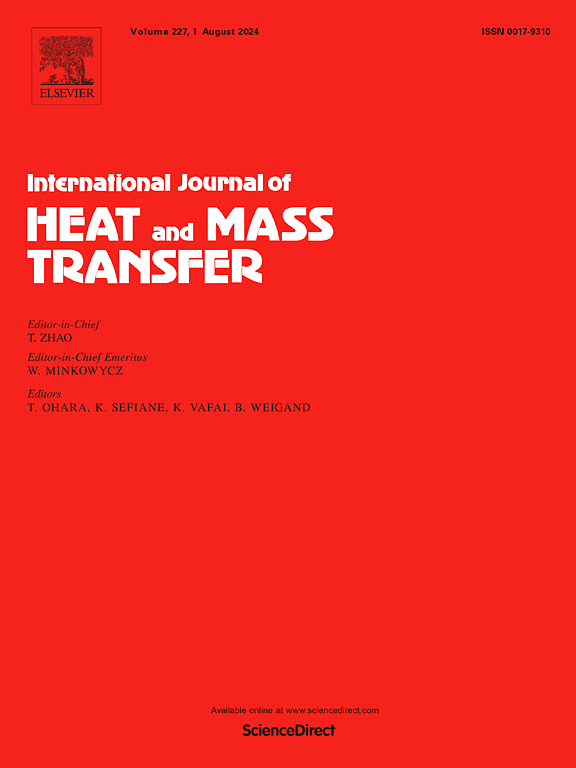Void fraction covariance and relative velocity covariance for steam-water boiling flows in NUPEC Type I and Type II rod bundles
IF 5
2区 工程技术
Q1 ENGINEERING, MECHANICAL
International Journal of Heat and Mass Transfer
Pub Date : 2024-11-16
DOI:10.1016/j.ijheatmasstransfer.2024.126435
引用次数: 0
Abstract
Accurately modeling gas-liquid two-phase flows in rod bundles is critical for process engineering, equipment optimization, and safety assessments involving rod bundle channels. Void fraction covariance and relative velocity covariance are key parameters that indicate the effect of non-uniform void fraction distribution on the value of area-averaged relative velocity. Reliable correlations for these covariances are essential for accurately modeling two-phase flows in system analysis codes. Developing constitutive relations for void fraction and relative velocity covariance requires accurate experimental data. Under light water-cooled reactor conditions, X-ray computed tomography (CT) is suitable for measuring gas-liquid two-phase flows. However, measurement noise is often present in the void fraction distribution data collected by X-ray CT. To address this, a post-processing algorithm was developed to remove noise from the X-ray CT data for rod bundle channels under BWR prototypical conditions. Based on the optimized data, constitutive correlations for void fraction covariance and relative velocity covariance in rod bundles were established for both bulk and subcooled boiling flows. The mean absolute relative deviations of these correlations for void fraction covariance and relative velocity covariance were 1.03 % and 0.956 %, respectively. Furthermore, the developed correlation was validated for a rod bundle containing a large water rod, with mean absolute relative deviations of 0.851 % for void fraction covariance and 1.31 % for relative velocity covariance.
NUPEC I 型和 II 型杆束中蒸汽-水沸腾流的空隙率协方差和相对速度协方差
杆束中气液两相流的精确建模对于涉及杆束通道的工艺工程、设备优化和安全评估至关重要。空隙率协方差和相对速度协方差是显示非均匀空隙率分布对区域平均相对速度值影响的关键参数。这些协方差的可靠相关性对于在系统分析代码中准确模拟两相流至关重要。建立空隙率和相对速度协方差的构成关系需要精确的实验数据。在轻水冷反应堆条件下,X 射线计算机断层扫描(CT)适合测量气液两相流。然而,X 射线 CT 收集到的空隙率分布数据中经常会出现测量噪声。为了解决这个问题,我们开发了一种后处理算法,用于去除 BWR 原型条件下棒束通道 X 射线 CT 数据中的噪声。在优化数据的基础上,建立了散流和过冷沸腾流棒束中空隙率协方差和相对速度协方差的构成相关性。空隙率协方差和相对速度协方差的平均绝对相对偏差分别为 1.03 % 和 0.956 %。此外,所开发的相关性还对包含大型水棒的棒束进行了验证,空隙率协方差的平均绝对相对偏差为 0.851 %,相对速度协方差的平均绝对相对偏差为 1.31 %。
本文章由计算机程序翻译,如有差异,请以英文原文为准。
求助全文
约1分钟内获得全文
求助全文
来源期刊
CiteScore
10.30
自引率
13.50%
发文量
1319
审稿时长
41 days
期刊介绍:
International Journal of Heat and Mass Transfer is the vehicle for the exchange of basic ideas in heat and mass transfer between research workers and engineers throughout the world. It focuses on both analytical and experimental research, with an emphasis on contributions which increase the basic understanding of transfer processes and their application to engineering problems.
Topics include:
-New methods of measuring and/or correlating transport-property data
-Energy engineering
-Environmental applications of heat and/or mass transfer

 求助内容:
求助内容: 应助结果提醒方式:
应助结果提醒方式:


